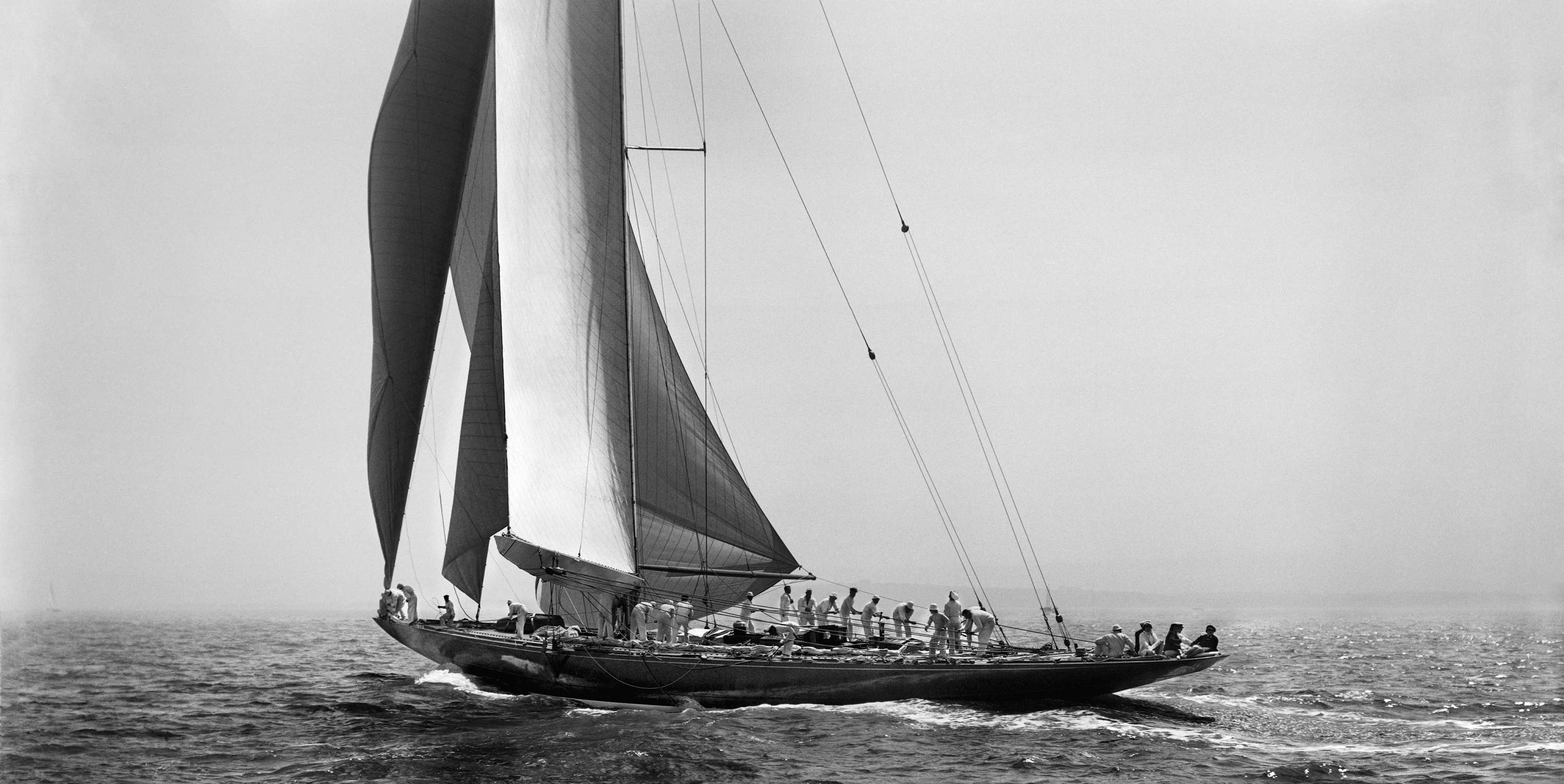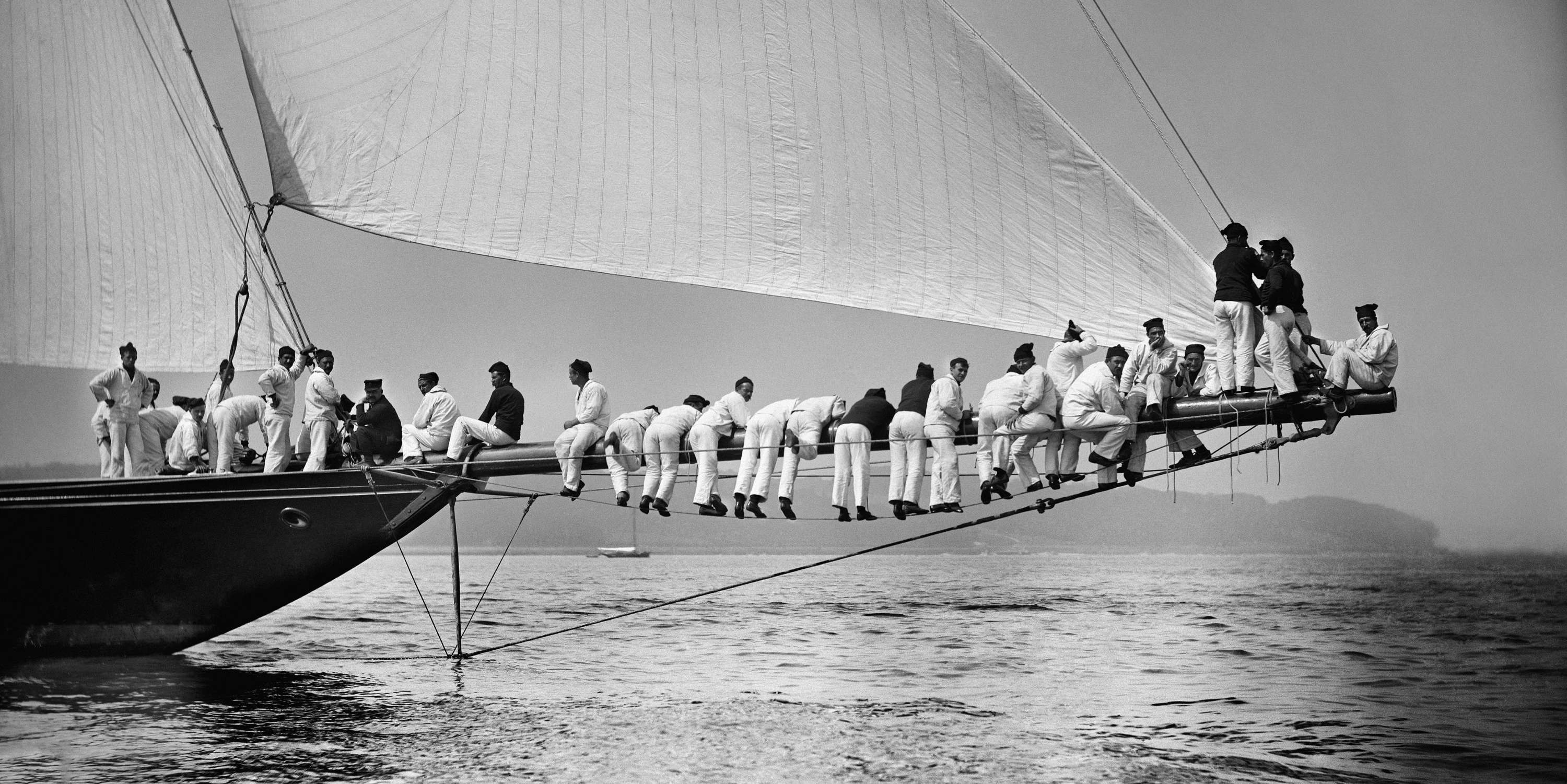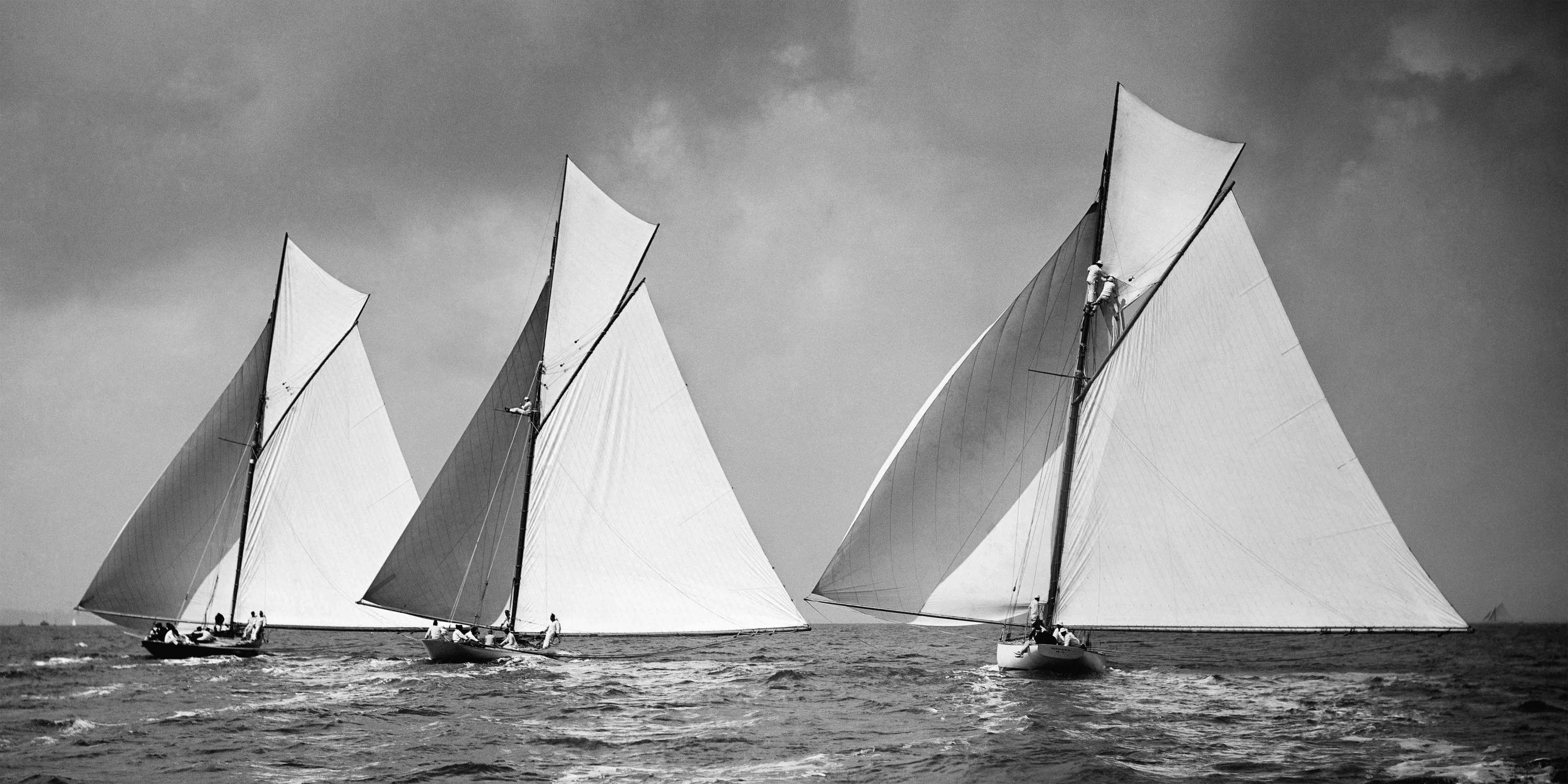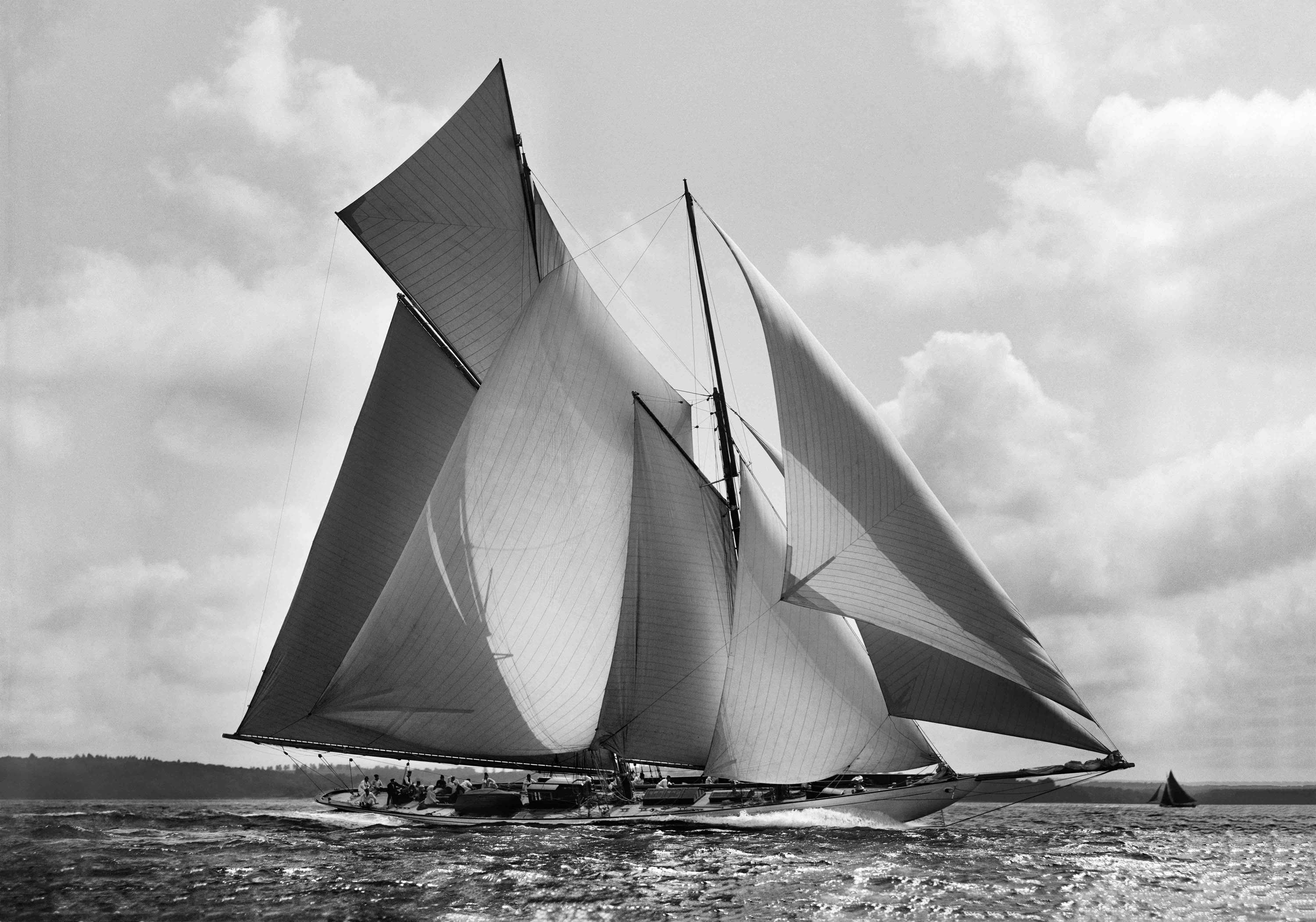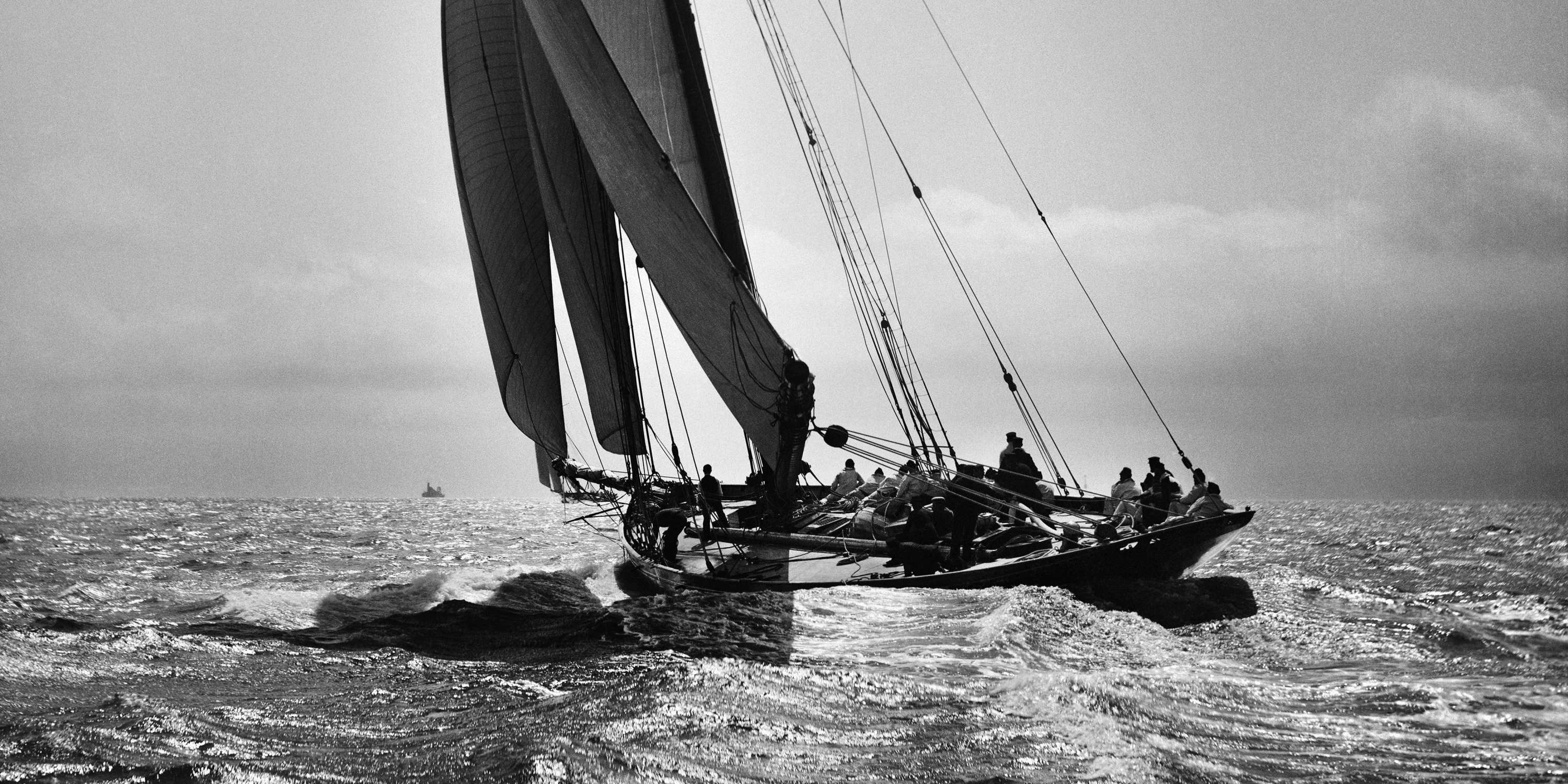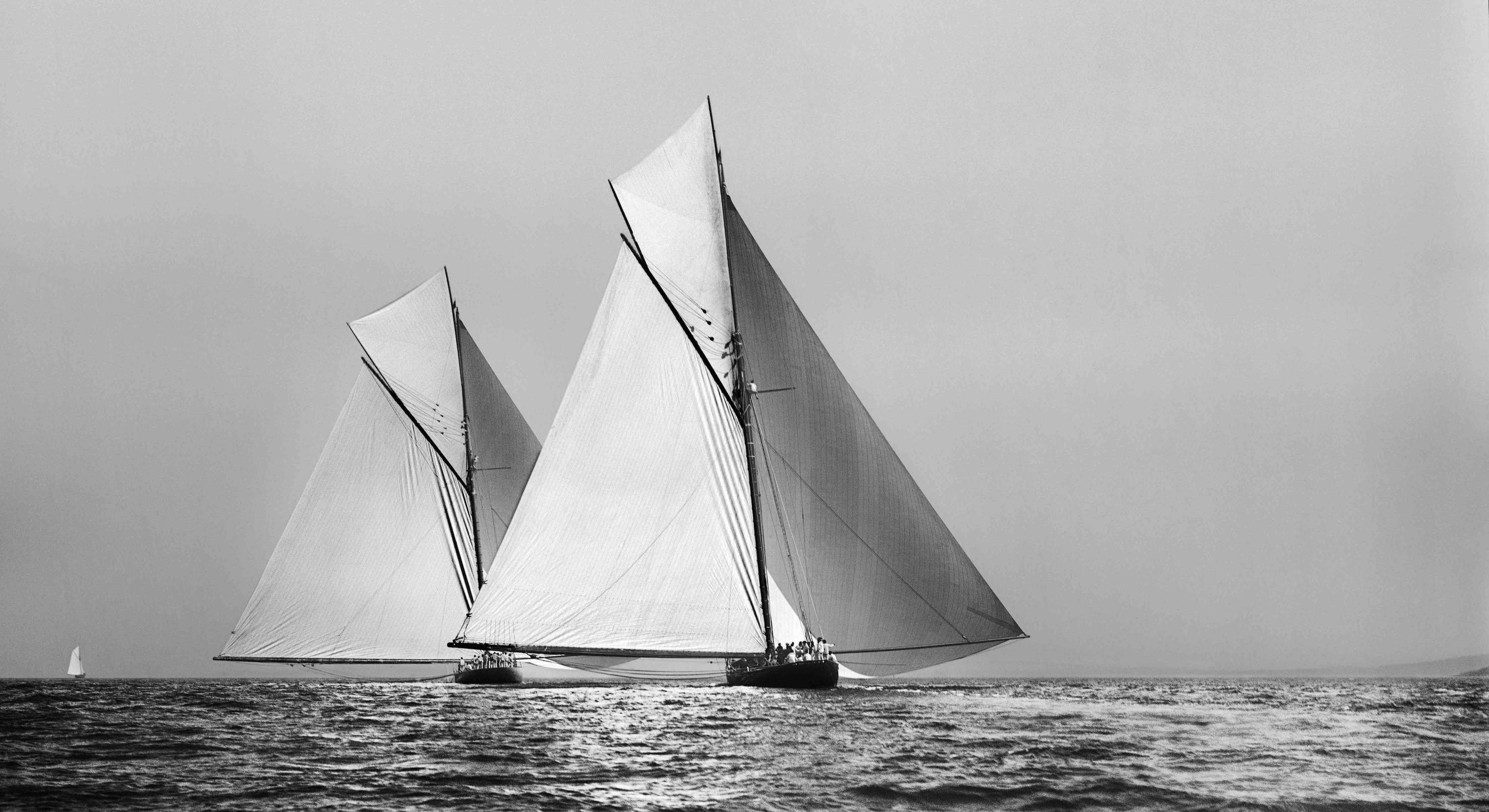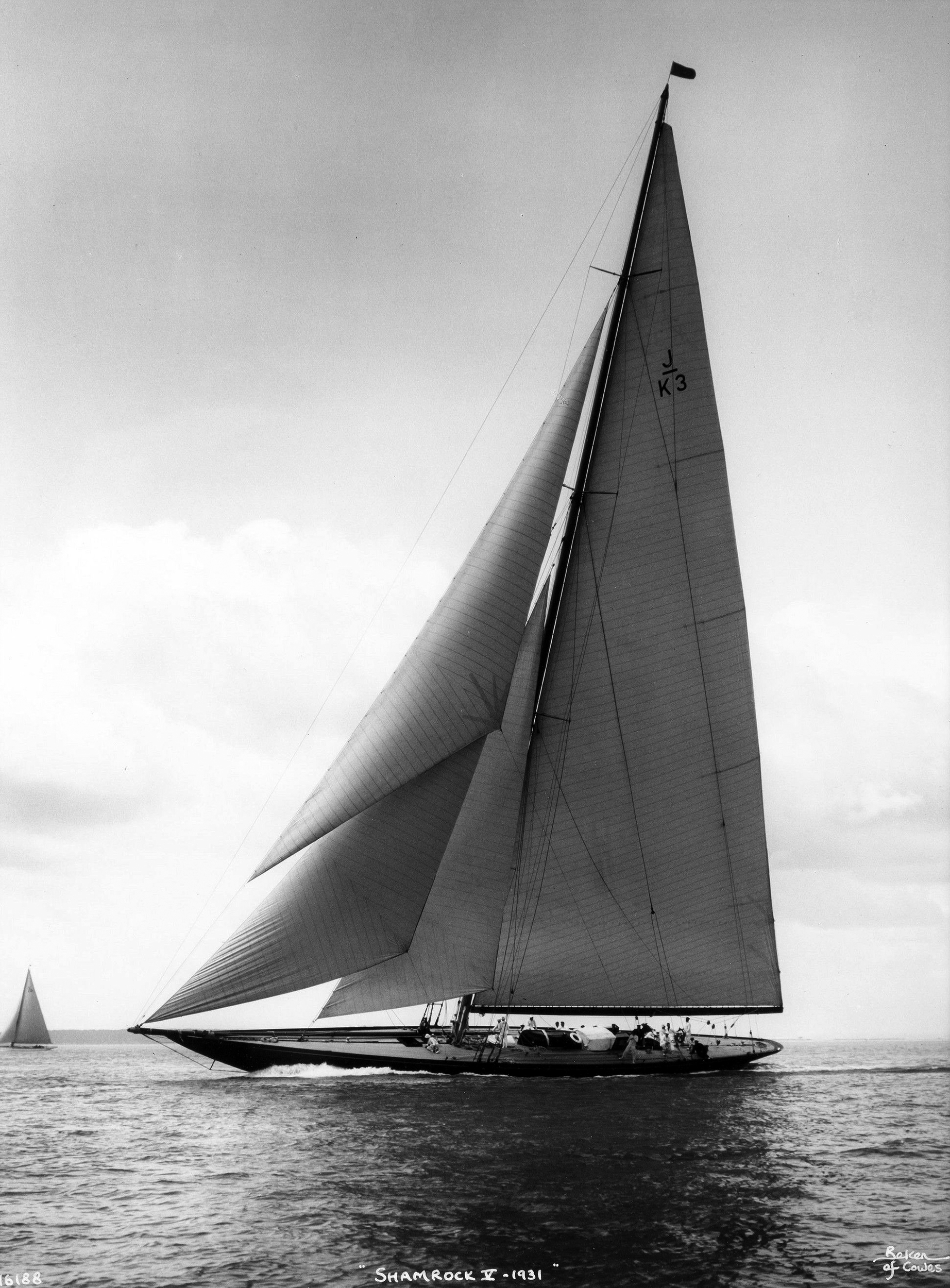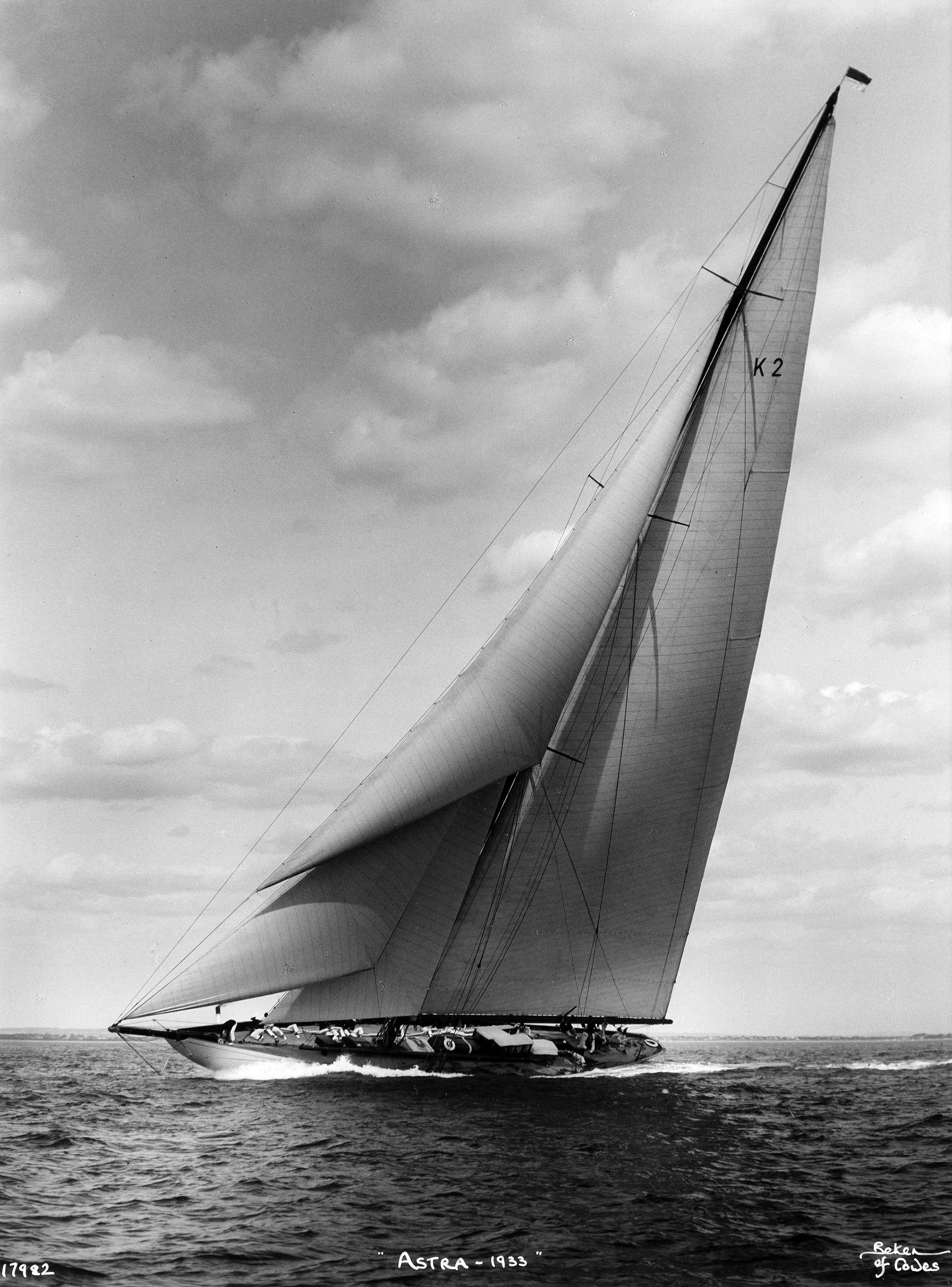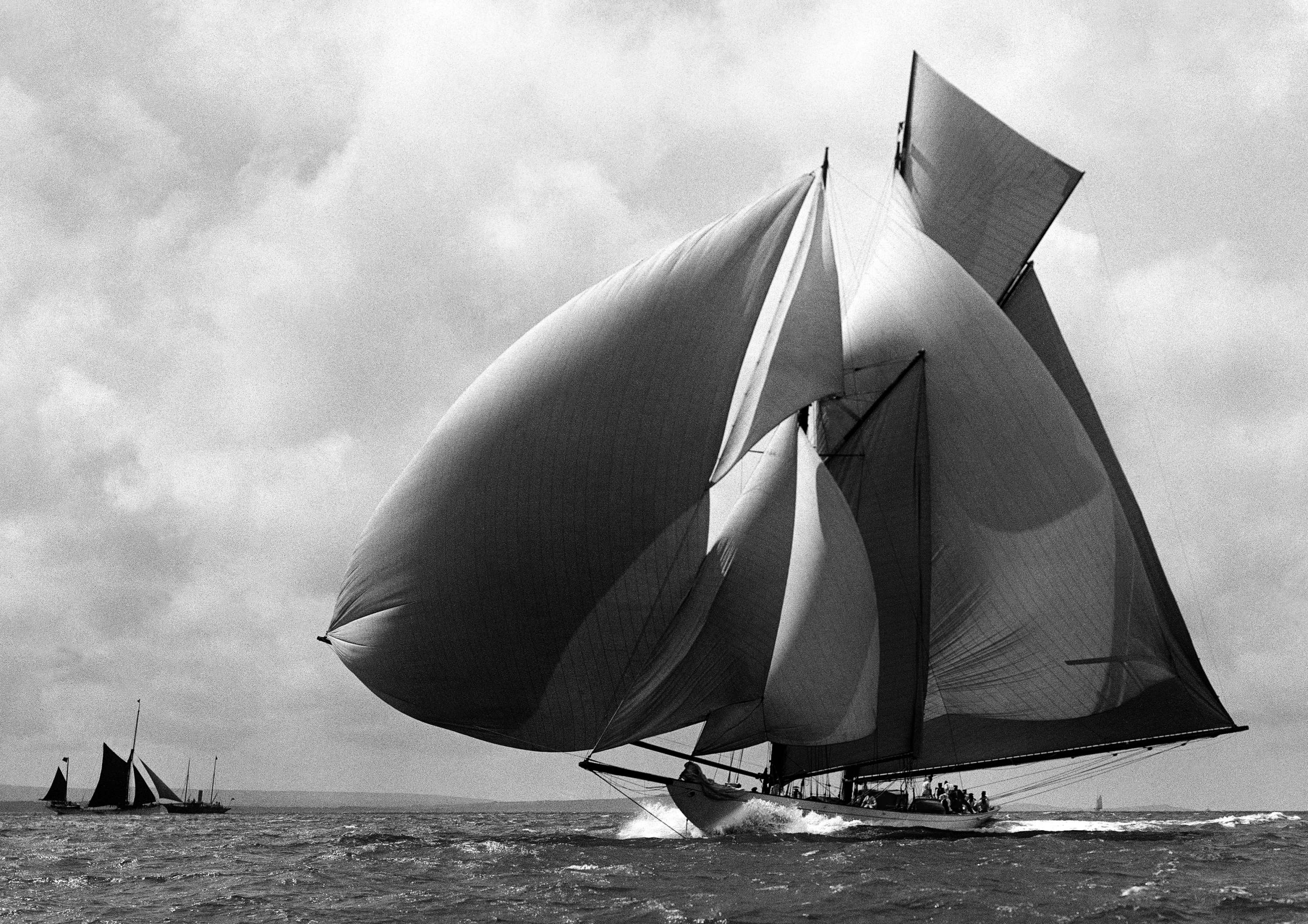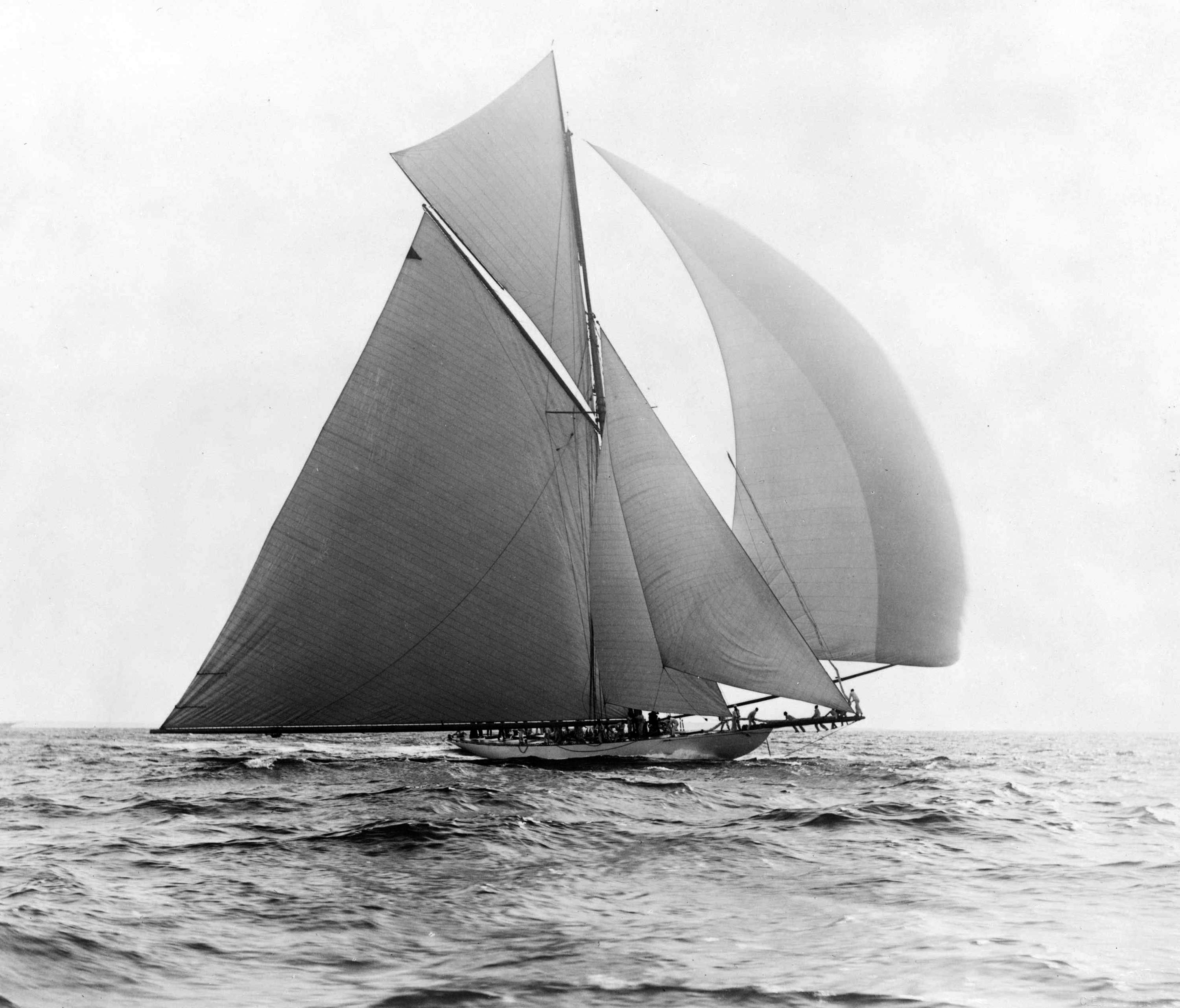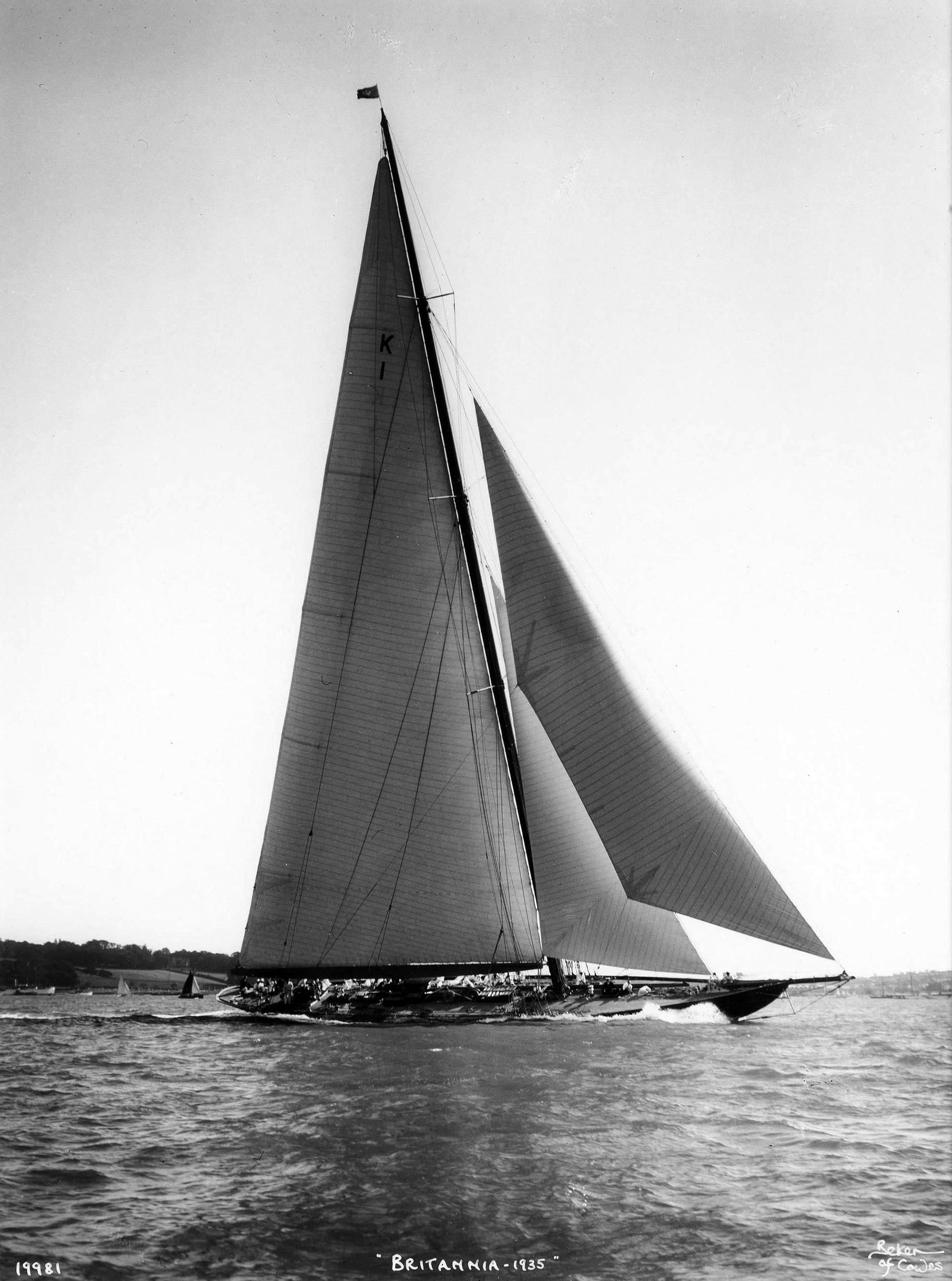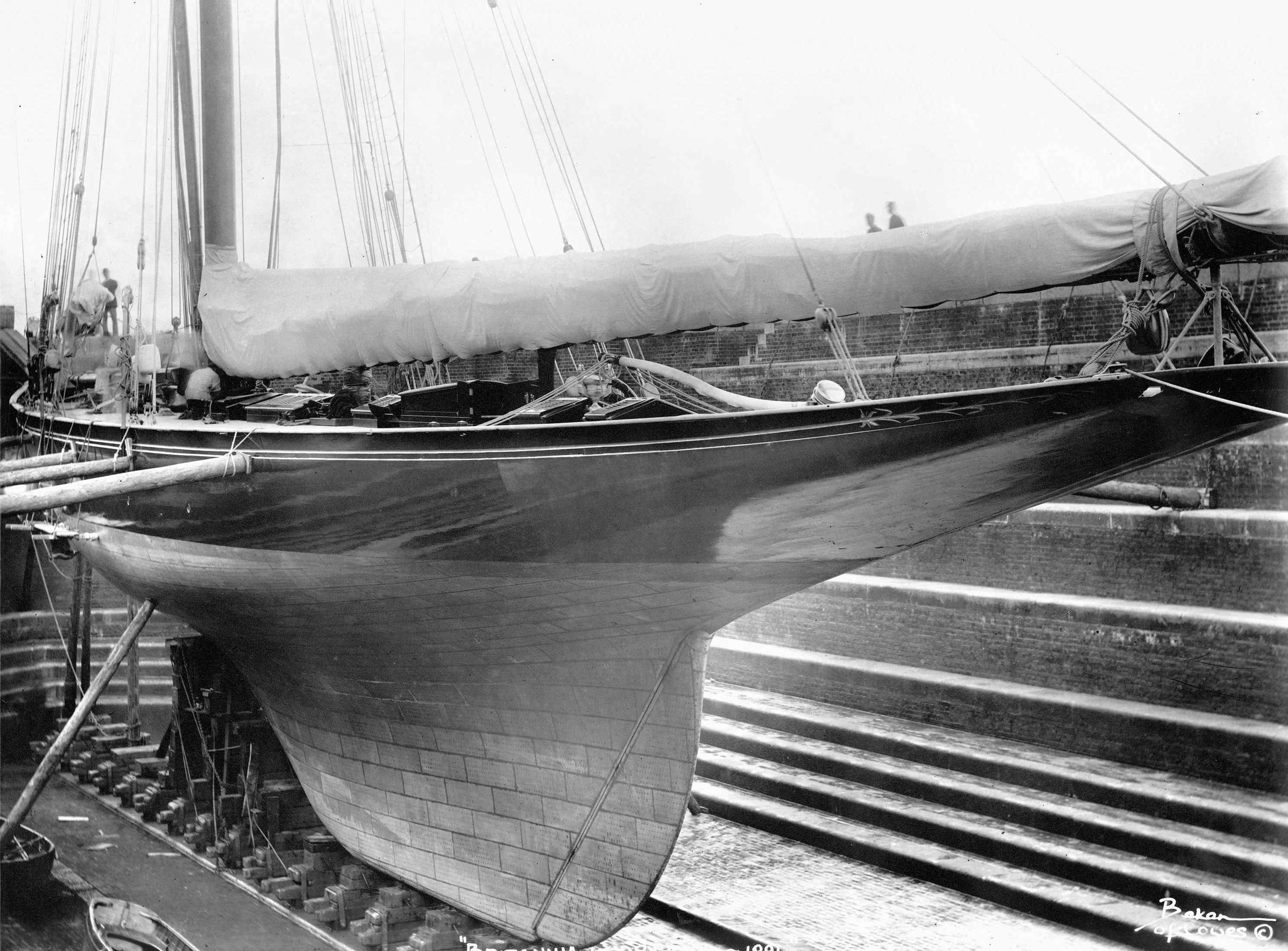Frank Beken & Alfred John West
J-Class Sailing Yachts
1885–1934
When Cowes chemist Alfred Beken (1855–1915) first sought to experiment with marine photography, the art was in its infancy. While early attempts provided inconsistent quality, undeterred by a myriad of technical problems of photographing at sea, Frank Beken (1880–1970) designed and built a new style of camera. Instead of the usual canvas bellows, he used two wooden box frames. One enclosing a screw thread focusing system and shutter, with the other frame housing a viewfinder with the shutter being fired by biting a rubber ball held between his teeth!
In the early days, Frank Beken rowed himself to the race course. Estimating the course of the yachts, the effect of wind and tide, he would wait for them to approach. Distances were not marked on his camera’s viewfinder. Instead, there were three settings for vessels of different sizes, being dinghies, yachts and ships. By standing in his small open dinghy, swaying from side to side in the swell of the sea, he would wait patiently for the approaching yachts, until three-quarters filled in his viewfinder he would bite the ball in his mouth taking a photograph. On each visit out he would take some 50 glass plates (film negatives) due to their sheer weight and normally only have one chance to photograph the boats thundering towards him.
